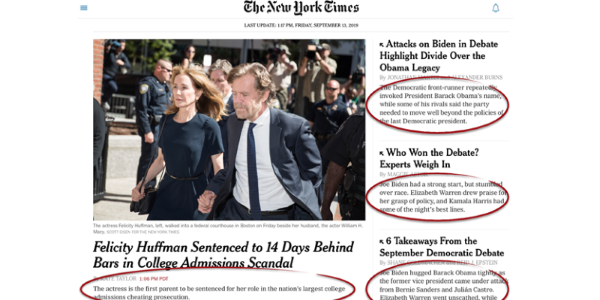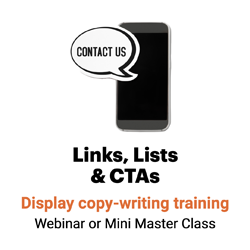Because it’s the best-read element on the page
Decks — those one-sentence summaries under the headline — do the heavy lifting on webpages.

Indeed, according to The Poynter Institute’s Eyetrack III study of reader behavior:
- 95% of webpage visitors read all or part of the deck. That’s huge when compared with any other element on the page.
- Visitors spend five to 10 seconds, on average, looking at the deck.That seems like a flash, but it’s actually a substantial investment in a scanner’s time.
- Decks “may be the only thing many readers view,” Eyetrack III researchers say.
If you want visitors to pay attention to your point, the researchers say, put it in the deck. Yet too many corporate communicators drop this power tool of communication.

Why decks?
No doubt about it: Decks are power tools of communication. Decks are important because they:
- Orient visitors at a glance, letting them know whether they’ve arrived at the right place.
- Offer a second layer of detail to scanners who don’t read word-by-word.
- Take a load off (and words out of) the headline.
(Not sure what the deck is? The deck for this piece is “Because it’s the best-read element on the page.”)
Put your message where your deck is.
Once you’ve gained attention in the headline, use the deck to sell the story. To write an effective deck:
1. Explain your message in one sentence.
Make it a full sentence.
2. Telegraph a single point.
Choose a secondary angle deck to go with news headlines, a summary deck to go with feature and benefits headlines.
3. Tell, don’t tease.
Don’t try to trick visitors into reading the page. Instead, summarize the page so well that visitors can get the gist of the story without reading the text.
4. Don’t repeat yourself.
A deck is an extension of the headline. It should expand on the headline, not duplicate it. So don’t repeat a single word from the headline in the deck.
This is San Francisco real estate. Make each word do new work. (Besides, repeating words in the head and deck may be a clue that you’re saying the same thing twice. Force yourself to revise repetitious layers of information.)
5. Use sentence-structure capitalization.
Sentence Capitalization is Fresher and More Contemporary than Title Capitalization.
But don’t include a period.
6. Keep it short.
Aim for 14 words or fewer. That length is easy for people to read and understand, according to research by the American Press Institute.
People read decks because they’re short and easy to scan. If your deck becomes a paragraph, it will lose its power to attract.
Don’t drop the deck.
This second layer of headline is essential to communicate to today’s audience of flippers and skimmers.
So don’t drop the deck — from webpages, news releases, blog posts and other pieces. Why skip the most important element of your piece?

Leave a Reply